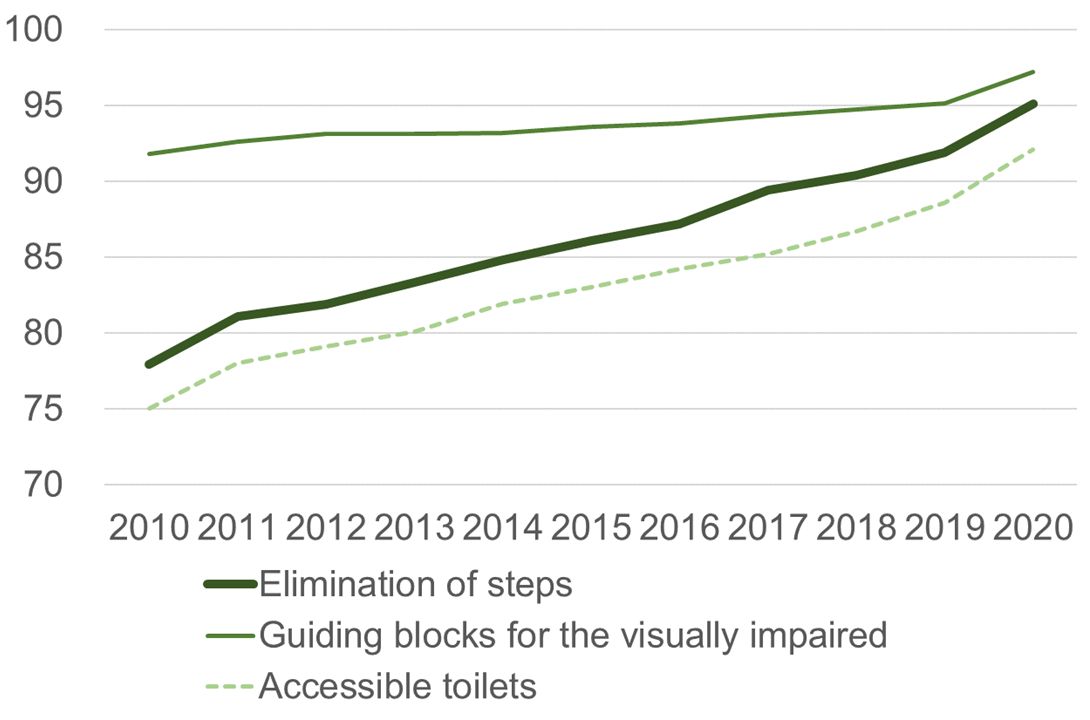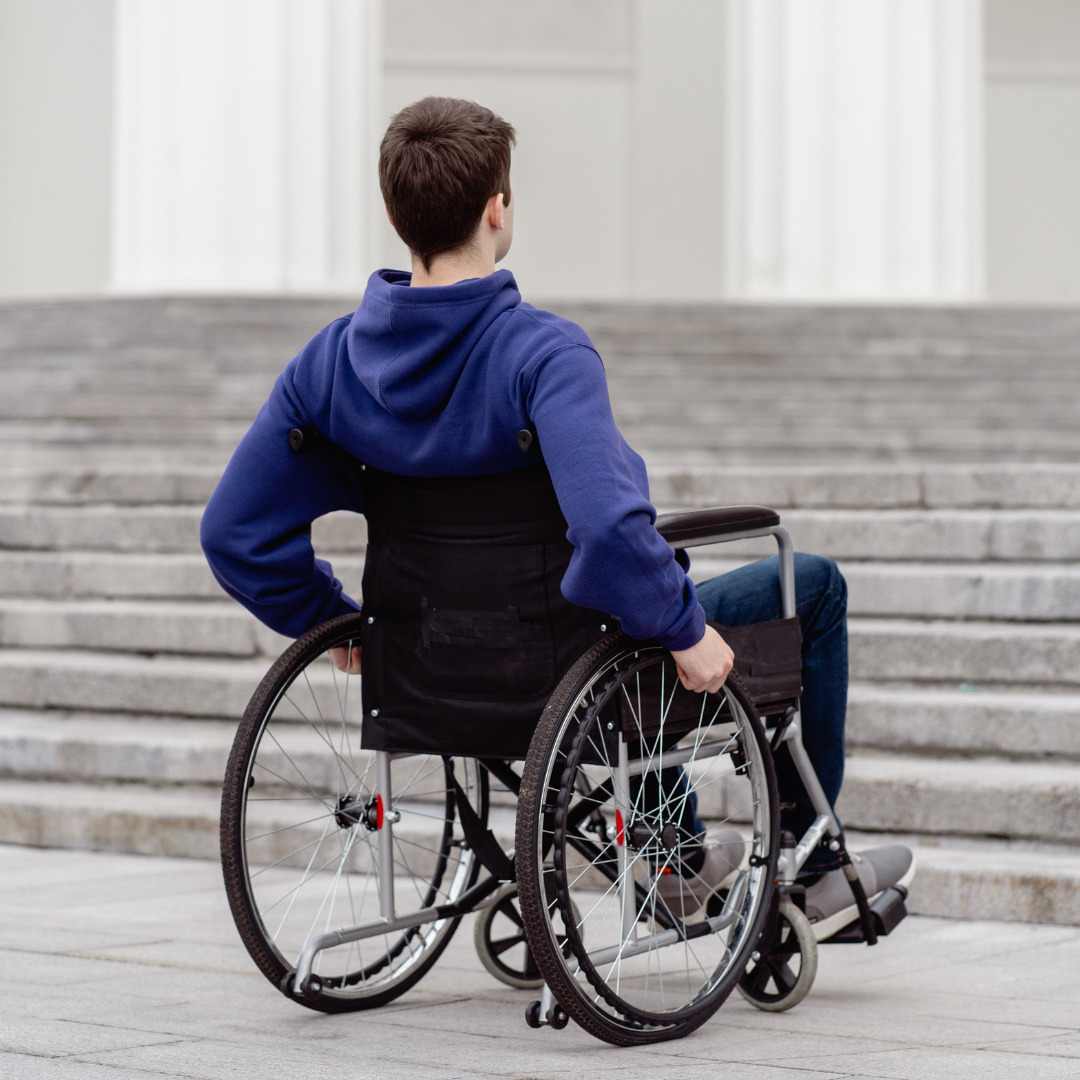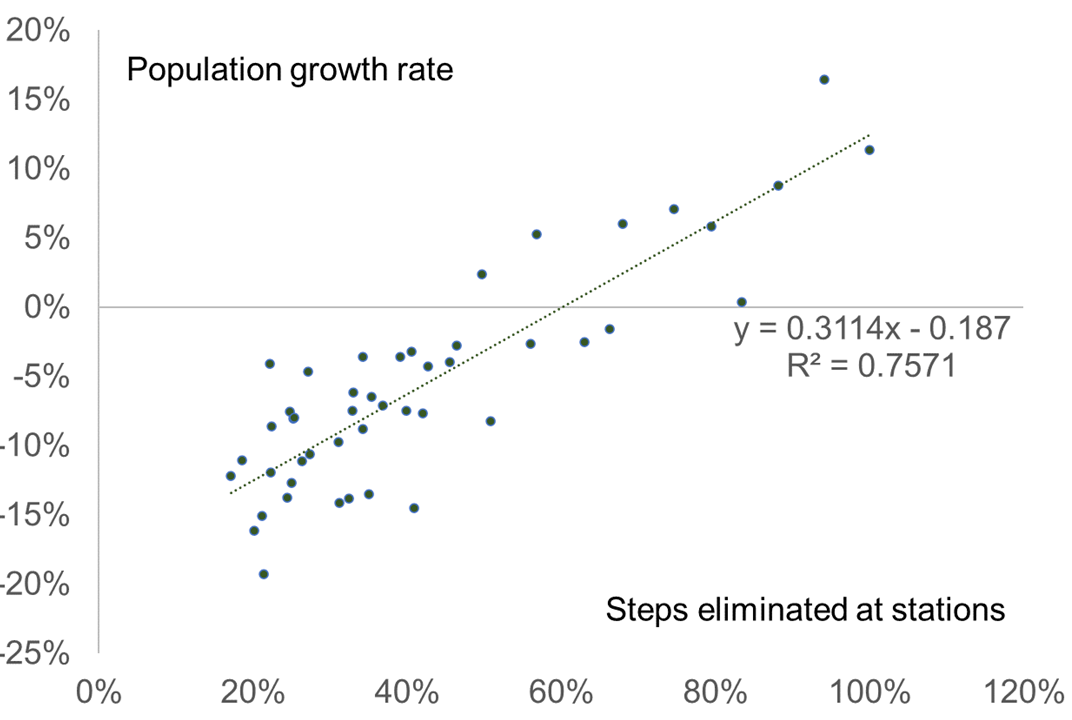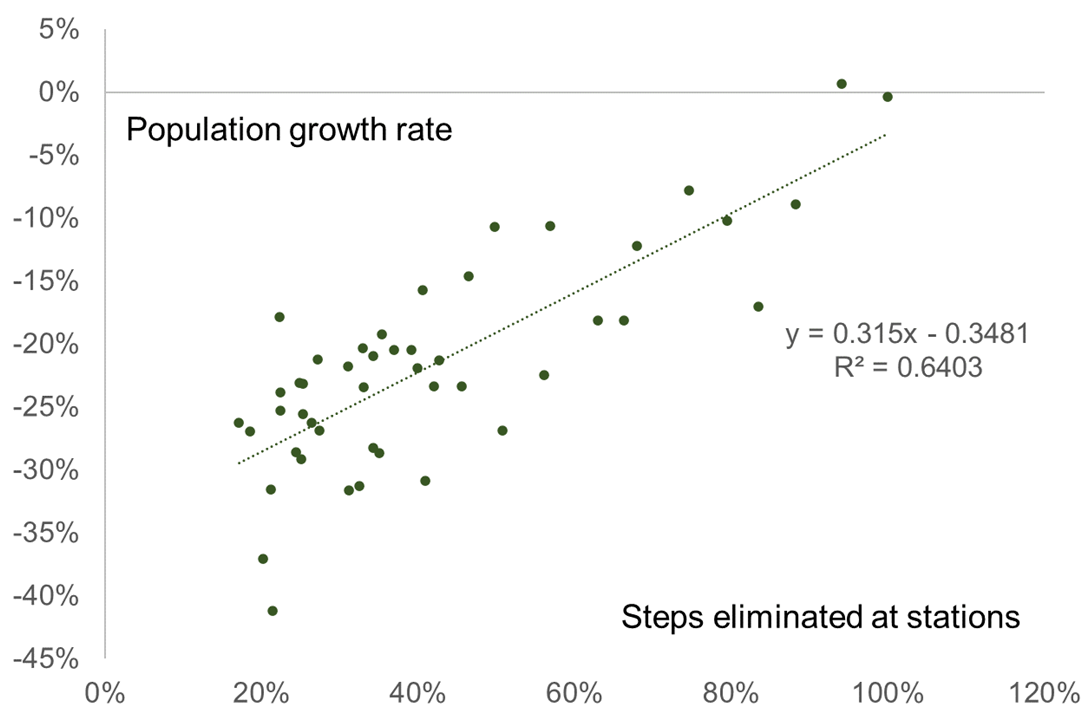Will it be impossible for travelers to visit local Japan in 10 years? (3)
Table of Contents
1: Accessibility at regional railway stations
2: Reasons for delays in making local railway stations accessibility
1: Accessibility at regional railway stations
Accessibility of large passenger facilities in Japan (railway stations, bus terminals, ferry terminals, and airports) is steadily progressing: in passenger facilities with an average of more than 3,000 passengers per day, the rate of steps eliminated at the end of FY2020 is 95.1%, the rate of guidance blocks for the visually impaired is 97.2%, and the rate of accessible toilets is 92.1%, approaching 100%.
Accessibility in passenger facilities with more than 3,000 passengers per day (%)

SOURCE: Ministry of Land, Infrastructure, Transport and Tourism
However, only 50% (4,734 out of 9,379) of all railway stations in Japan have ‘steps eliminated’ at the end of FY2021. Regarding the percentage of ‘stations with steps eliminated’ by prefecture, 22 prefectures (47% of the total) have less than 30%. The low rate is particularly noticeable in rural areas, such as Yamaguchi, Kagoshima, and Aomori prefectures, where the percentage is 17%, 19%, and 20%, respectively.
The proportion of stations with steps eliminated (%)
1 Okinawa Prefecture 100.0% 2 Tokyo Metropolitan 94.1% 3 Kanagawa Prefecture 88.2% 4 Osaka Prefecture 83.4% 5 Saitama Prefecture 79.4% 6 Aichi Prefecture 74.6% 7 Chiba Prefecture 68.0% 8 Hyogo Prefecture 66.3% 9 Kyoto Prefecture 62.9% 10 Shiga Prefecture 56.8% 11 Miyagi Prefecture 56.1% 12 Nara Prefecture 50.8% 13 Fukuoka Prefecture 49.7% 14 Hiroshima Prefecture 46.4% 15 Ibaraki Prefecture 45.5% 16 Gunma Prefecture 42.6% 17 Toyama Prefecture 42.1% 18 Iwate Prefecture 40.9% 19 Okayama Prefecture 40.6% 20 Fukui Prefecture 39.8% 21 Shizuoka Prefecture 39.1% 22 Kagawa Prefecture 36.9% 23 Kumamoto Prefecture 35.4% 24 Nagasaki Prefecture 35.0% 25 Yamanashi Prefecture 34.2% 26 Tochigi Prefecture 34.2% 27 Gifu Prefecture 33.0% 28 Saga Prefecture 32.9% 29 Fukushima Prefecture 32.4% 30 Yamagata Prefecture 31.1% 31 Tottori Prefecture 31.1% 32 Ehime Prefecture 27.4% 33 Mie Prefecture 27.2% 34 Niigata Prefecture 26.4% 35 Oita Prefecture 25.3% 36 Hokkaido 25.2% 37 Tokushima Prefecture 25.0% 38 Nagano Prefecture 24.8% 39 Wakayama Prefecture 24.4% 40 Miyazaki Prefecture 22.4% 41 Shimane Prefecture 22.3% 42 Ishikawa Prefecture 22.2% 43 Akita Prefecture 21.4% 44 Kochi Prefecture 21.2% 45 Aomori Prefecture 20.1% 46 Kagoshima Prefecture 18.5% 47 Yamaguchi Prefecture 17.1%
SOURCE: Ministry of Land, Infrastructure, Transport and Tourism
The low proportion of ‘stations with steps eliminated’ for the elderly with limited mobility, disabled people using wheelchairs, etc. and families with children using pushchairs, etc., makes it difficult for them to travel by rail to rural areas. 17.4% of families traveling with infants and toddlers used ‘the train’ as their primary means of transport to their destination, significantly lower than 27.3% of all users (2019). The proportion of families traveling with infants and toddlers who used ‘train’ as their primary transport at the destination was also 18.6%, significantly lower than the 29.7% of users.

Accessibility is still one of the most common problems. According to the 2018 Ministry of Land, Infrastructure, Transport and Tourism survey of wheelchair users on improving the environment for wheelchair use on railways (multiple answers), the main ‘difficulties when using railways’ are still ‘stations were not accessible’ at 35% and ‘accessible route was a detour’ at 29%. Furthermore, 78% of the 184 respondents to this survey were from the three major urban regions, including Kanto, Kinki, and Chubu regions. Considering the large number of respondents from the three metropolitan areas, which have a high proportion of stations with steps eliminated, the response rate for the above items among the ‘problems’ when using the railways in Japan may be even higher.

2: Reasons for delays in making local railway stations accessibility
The reason for the lack of elimination of steps at local railway stations is the aging of the population and the consequent decline in population. The correlation between the percentage of elderly people aged 65 and over by prefecture and ‘stations with steps eliminated’ is exceptionally high. The correlation between the rate of increase or decrease in population by prefecture and ‘stations with steps eliminated’ is also extremely high. In rural areas of Japan, we can say that older people with lames no longer use the railways due to the steps at stations. A population decline has also led to a profit deterioration, making it impossible to invest in eliminating steps.
The proportion of steps eliminated at stations and population change by prefecture (2020/2000)

SOURCE: Ministry of Land, Infrastructure, Transport and Tourism, National Institute of Population and Social Security Research
Moreover, troublingly, the lower the rate of elimination of steps at stations, the more serious the future rate of population decline in the prefecture. For example, the Yamaguchi (17% of steps eliminated), Kagoshima (19%), and Aomori (20%) prefectures have projected population decline rates of 26%, 27%, and 37% respectively, from 2015 to 2045, well above 20%. Thus, the composition of the aging population and the associated population decline will remain the same and worsen.
The proportion of steps eliminated at stations and population change forecast by prefecture (2045/2015)

SOURCE: Ministry of Land, Infrastructure, Transport and Tourism, National Institute of Population and Social Security Research